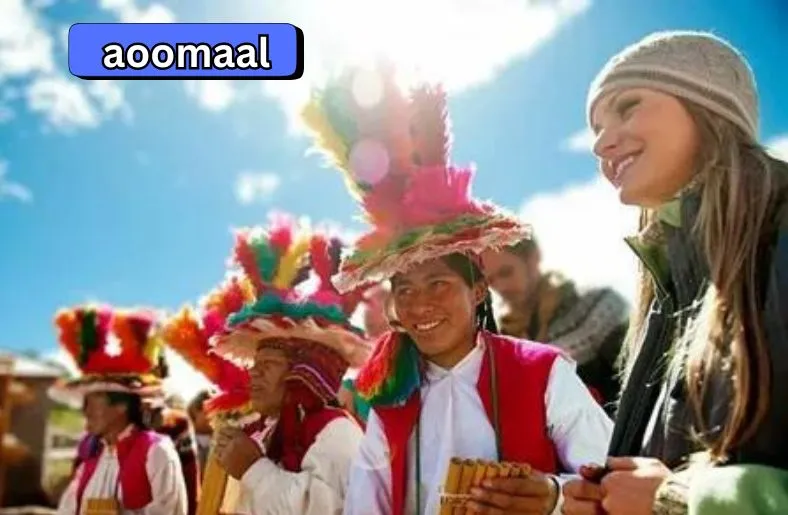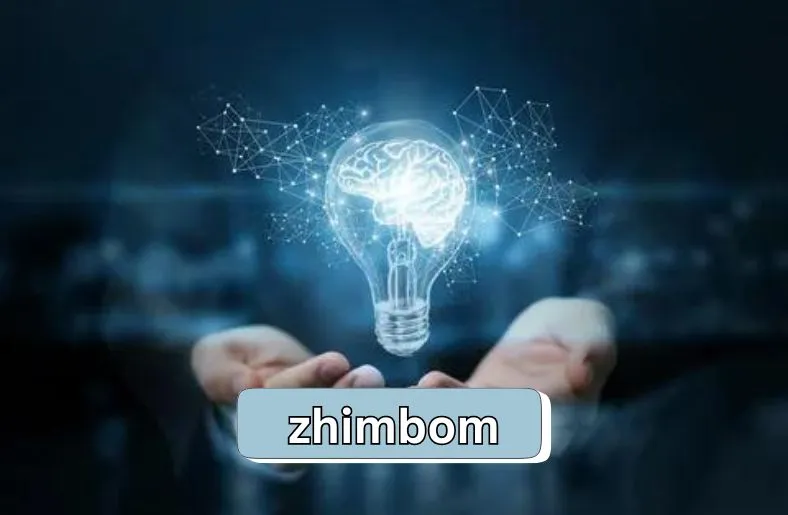Introduction
Have you ever wondered about the word “aoomaal”? It might seem unfamiliar, but it holds a lot of cultural importance. Aoomaal is not just a term; it represents a vibrant tradition passed down through generations. This blog post will explore what aoomaal means and why it matters so much to various cultures.
Aoomaal brings people together in celebration and unity. It includes practices, stories, and events that connect individuals to their heritage. These traditions help people remember their history and feel part of a community. Through aoomaal, people celebrate their roots and share their cultural values with others.
In this post, we’ll dive into the history of aoomaal and see how it has evolved over time. We’ll also look at how different cultures celebrate it today. Join us as we uncover the rich traditions and discover why aoomaal remains so important in modern times.
What is Aoomaal?
Aoomaal is a special term that represents a rich cultural tradition. It’s more than just a word; it’s a way of celebrating community and heritage. People use aoomaal to describe practices, stories, and events that bring them together. These traditions often focus on unity and respect for one’s roots.
At its heart, aoomaal connects individuals with their history. It helps people remember where they come from and feel a sense of belonging. Each community may have its own version of aoomaal, but the core idea remains the same: honoring and preserving cultural heritage.
Aoomaal can be expressed in many ways. For some, it involves storytelling, where people share tales from their past. Others might celebrate through music and dance, which highlight traditional customs. Each expression of aoomaal carries deep meaning and helps people stay connected to their history.
Moreover, aoomaal is not just about looking back. It’s also about creating new memories and strengthening bonds within the community. By participating in these traditions, people continue to share their heritage with future generations. This ongoing practice ensures that the spirit of aoomaal remains vibrant and relevant.
Historical Roots of Aoomaal
The history of aoomaal stretches back many centuries. This tradition began as a way for people to share their values and beliefs. Early communities used aoomaal to strengthen their social bonds and maintain cultural practices. Over time, these traditions became more complex and detailed.
Originally, aoomaal was closely linked to local customs. Each region added its unique touch, shaping the tradition in various ways. As people moved and interacted with others, aoomaal adapted. It absorbed new influences while keeping its core values intact. This ability to evolve helped it remain relevant.
Historians believe that aoomaal played a crucial role in preserving cultural identity. It allowed people to celebrate their heritage even as societies changed. The tradition acted as a bridge between the past and present. Through storytelling, music, and rituals, aoomaal kept historical memories alive.
In many cultures, aoomaal was passed down through generations. Families and communities gathered to honor their ancestors and share their stories. These gatherings helped teach younger members about their history. They also reinforced a sense of belonging and pride in their cultural heritage.
Today, aoomaal continues to be a vital part of many communities. It reflects the resilience of cultural traditions and the importance of staying connected to one’s roots. By understanding the historical roots of aoomaal, we can appreciate its role in shaping cultural identity and preserving heritage for future generations.
Cultural Significance and Traditions
Aoomaal holds deep cultural significance in many communities. It is more than just a tradition; it is a way to connect with the past. Through aoomaal, people celebrate their heritage and share their values. This practice creates a strong sense of community and belonging.
Traditionally, aoomaal includes various customs and rituals. These can involve storytelling, music, and dance. Each of these elements plays a role in passing down cultural knowledge. For instance, stories often highlight important lessons and historical events. Music and dance bring these stories to life and make them memorable.
Festivals and ceremonies are key aspects of aoomaal. They are special times when people come together to honor their traditions. During these events, families and communities dress in traditional clothing and prepare special foods. This helps keep their cultural practices alive and vibrant.
Additionally, aoomaal serves to unite people across generations. By participating in these traditions, younger members learn about their ancestors and their way of life. This helps them appreciate their heritage and continue the practices in the future.
Aoomaal also helps in preserving cultural identity in a changing world. As societies evolve, keeping these traditions alive is crucial. They provide a link to the past and help people maintain their unique cultural identity. Through these practices, communities stay connected to their roots and celebrate their shared history.
Traditional Practices and Rituals
Traditional practices and rituals surrounding aoomaal are vibrant and meaningful. These customs often begin with detailed preparations, involving families coming together to discuss their plans. This communal effort sets the stage for the celebration, fostering a strong sense of unity.
During the main event, participants dress in colorful, traditional attire. This clothing reflects the rich cultural heritage associated with aoomaal. Music plays a crucial role, with lively tunes and rhythms creating a festive atmosphere. Drumming, in particular, is a key feature, setting the beat for dances and celebrations.
Rituals frequently include offerings to ancestors or deities. These offerings symbolize respect and gratitude. By making these offerings, participants seek blessings for health and prosperity. Such practices honor past generations and ask for their continued guidance and support.
Communal feasting is another significant part of aoomaal. Traditional dishes are prepared with care and shared among everyone present. This act of sharing food strengthens community bonds and continues the tradition of celebrating together. Each dish often carries its own cultural significance, reflecting the history and values of the community.
These rituals are not only about preserving history but also about fostering connections. They bring people together, creating shared memories and experiences. As communities continue to celebrate aoomaal, they ensure that these traditions are passed down to future generations, keeping their cultural heritage alive.
Modern Adaptations and Celebrations
Modern adaptations of aoomaal show how traditions evolve while staying true to their roots. Today, aoomaal celebrations blend ancient practices with contemporary elements, making them relevant for younger generations. Festivals now feature vibrant music and dance performances that appeal to modern audiences. These events often include new artistic expressions and creative displays that respect traditional values.
Technology also plays a significant role in these modern celebrations. Social media platforms allow people from around the world to participate and share their experiences. Virtual events and online communities help spread awareness about aoomaal, reaching a global audience and encouraging diverse interpretations. This digital presence helps keep the tradition alive and relevant in today’s fast-paced world.
Educational workshops and interactive experiences are becoming popular. These programs introduce people to the significance of aoomaal through hands-on learning. By engaging with the tradition in new ways, participants gain a deeper understanding and appreciation. These modern adaptations ensure that the essence of aoomaal continues to thrive amidst change.
Families are also incorporating aoomaal practices into their daily lives. This integration helps keep the tradition alive and accessible. Through creative adaptations and modern celebrations, communities are ensuring that aoomaal remains a vibrant and meaningful part of their cultural heritage for future generations.
Controversies and Criticisms
Aoomaal, despite its cultural significance, faces several controversies and criticisms. One major issue is the commercialization of traditional practices. As festivals and events grow, some worry that the essence of aoomaal is lost. Commercial interests might overshadow the cultural and historical value of these celebrations.
Another concern involves differing interpretations within various communities. People from different regions might emphasize different aspects of it. This can lead to conflicts about what is considered authentic. Disagreements about traditional practices and their meanings can create tensions among those who value preserving original customs.
The involvement of younger generations also raises questions. Many young people engage with it through modern lenses. This can clash with traditionalists who wish to preserve long-standing customs. Balancing tradition with contemporary perspectives is an ongoing challenge.
Environmental impacts are another issue. Large gatherings for it can strain local resources and ecosystems. Proper management is needed to ensure that celebrations do not harm the environment. Sustainable practices are important for keeping the tradition alive without causing damage.
Addressing these controversies requires thoughtful dialogue and action. By balancing tradition with modern needs, and managing environmental impacts, communities can work to preserve the essence of it while adapting to the present.
The Future of Aoomaal
The future of aoomaal looks bright, with many efforts focused on preserving its essence. As traditions evolve, communities are finding new ways to keep aoomaal relevant. Engaging younger generations is key to ensuring its continued significance. Educational programs and workshops introduce these traditions in a fun and interactive way.
Modern technology also plays a role. Social media helps spread awareness about it. Online platforms allow people to share stories, images, and celebrations. This digital presence connects communities worldwide and keeps the tradition alive.
Festivals and events are adapting to contemporary tastes. They blend traditional practices with modern elements, making them appealing to diverse audiences. New artistic forms and technologies are incorporated into celebrations, offering fresh perspectives while honoring the past.
Advocacy groups are crucial for protecting it. They work to prevent commercialization from diluting its cultural value. These groups emphasize the importance of authentic representation in both local and global contexts.
Looking ahead, the key is to balance tradition with innovation. By respecting aoomaal’s roots while embracing change, communities can ensure its relevance for future generations. Participation, education, and creativity will help maintain the tradition’s vibrancy. As long as people care about preserving it, it will continue to inspire connections across time and cultures.
Conclusion
In summary, aoomaal is a cherished tradition that embodies cultural heritage and unity. Its rich history and evolving practices illustrate how traditions can adapt while preserving their core values. From traditional rituals to modern celebrations, it continues to foster connections and strengthen community bonds. As it moves forward, balancing innovation with tradition will be crucial. By engaging younger generations and utilizing modern technology, it can thrive in the contemporary world. Embracing both its past and future ensures that this vibrant tradition remains a vital part of cultural identity for years to come.





